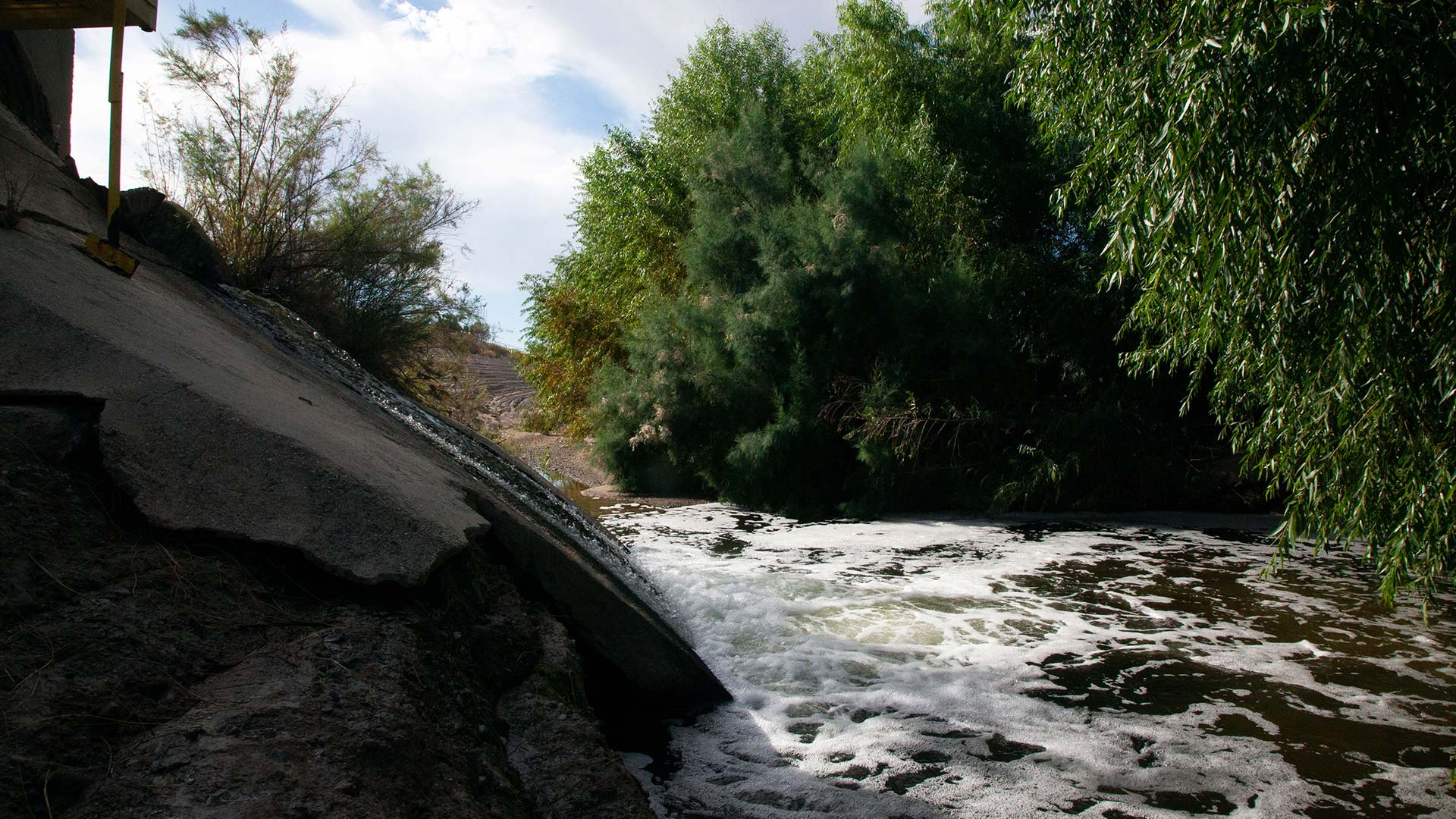 Effluent gushes out of the outfall, into the Santa Cruz River. The outfall of water is constantly flowing, but there is a diurnal fluctuation due to cyclical human water use.
Effluent gushes out of the outfall, into the Santa Cruz River. The outfall of water is constantly flowing, but there is a diurnal fluctuation due to cyclical human water use.
Even for local residents, the Sweetwater Wetlands Park remains a hidden surprise. Nestled within this small nature preserve, avid bird watchers find their haven. This hidden gem is encircled by a self-guided path that meanders around settling ponds and recharge basins, filled with reclaimed water. Within this flourishing ecosystem, you’ll encounter vermilion flycatchers, American bullfrogs, ducks, Sonoran mud turtles, raccoons, and elusive bobcats. It’s no wonder that over 122 bird species and 47 dragonfly species have been observed in and around this sanctuary.
The significance of the park extends beyond its abundant wildlife; the effluent it houses not only supports the aquatic wildlife but also nourishes the riparian vegetation as it seeps into the ground and replenishes the aquifer. On the opposite side of the park, lies the historic Santa Cruz River, which as Luke Cole, Director for Resilient Communities and Watersheds at the Sonoran Institute notes, has witnessed a return of clean water flow for at least 10 years.
Historically, the river system has exhibited perennial flows in some segments and seasonal flows in others. However, by 1910, the perennial streams had dwindled and by 1940, the seasonal flows ceased. The river had been abused and used as an open trash pit, receiving lower-quality wastewater.
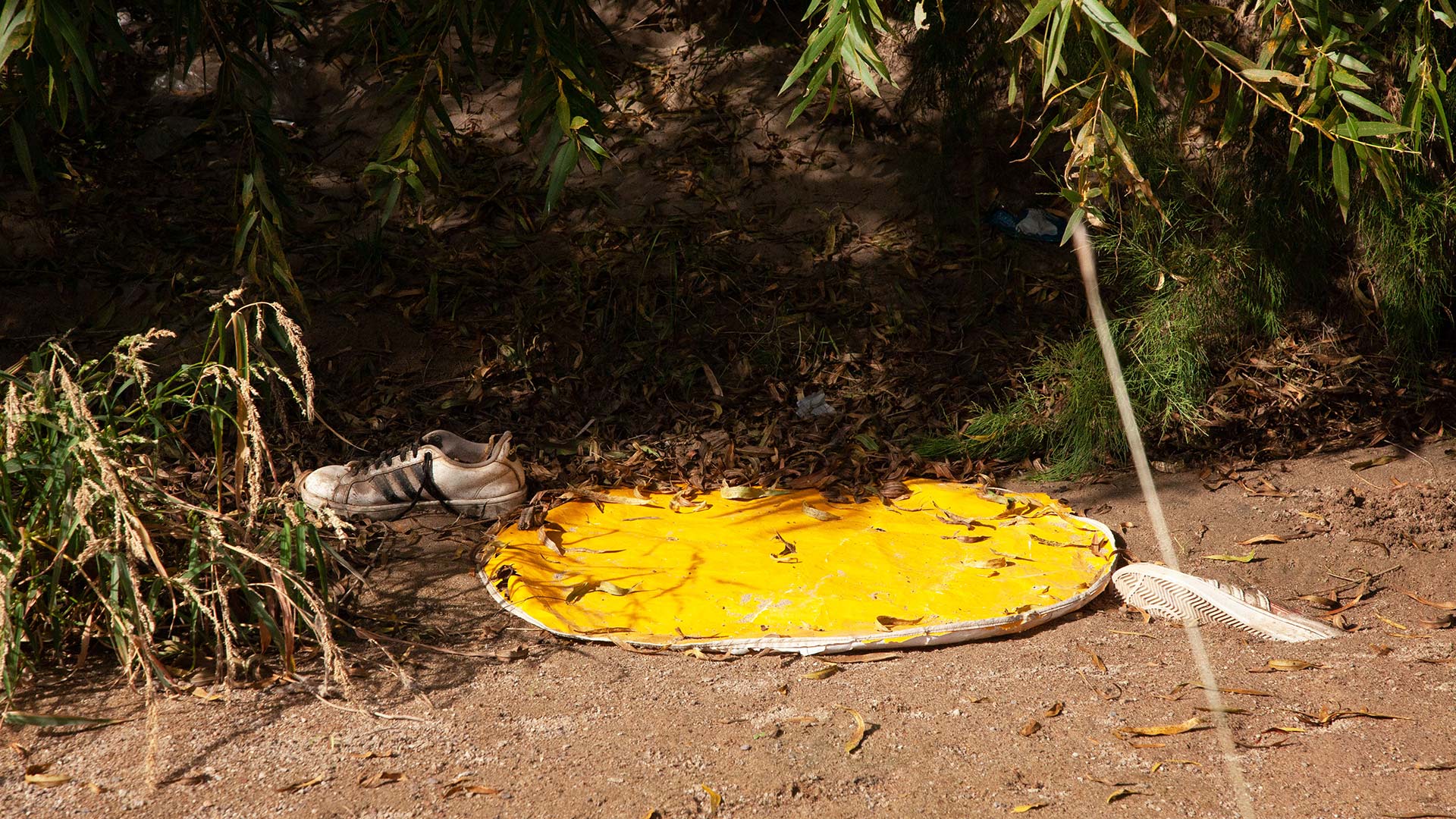 Trash in the Santa Cruz River. Conservation groups such as the Sonoran Institute as well as Tucson Clean and Beautiful, host community trash clean ups to "beautify" the river. Efforts can be met with frustration during monsoon season, when storm water brings more trash through the river.
Trash in the Santa Cruz River. Conservation groups such as the Sonoran Institute as well as Tucson Clean and Beautiful, host community trash clean ups to "beautify" the river. Efforts can be met with frustration during monsoon season, when storm water brings more trash through the river.
After a Pima County voter-approved bond initiative, the Agua Nueva Water Reclamation Facility was constructed.
The results of the endeavor are striking.
“We’ve had beautiful, clean water flowing into the Santa Cruz, to the point that endangered fish species have come back,” Cole said. “We’ve had dragonfly population numbers, bird counts, everything is up because the water quality is excellent and steady.”
This resurgence has allowed ecological communities to thrive and transform the once-smelly river.
Alongside the Santa Cruz is the Chuck Huckleberry Loop, which Pima County steadily expands its mileage each year.
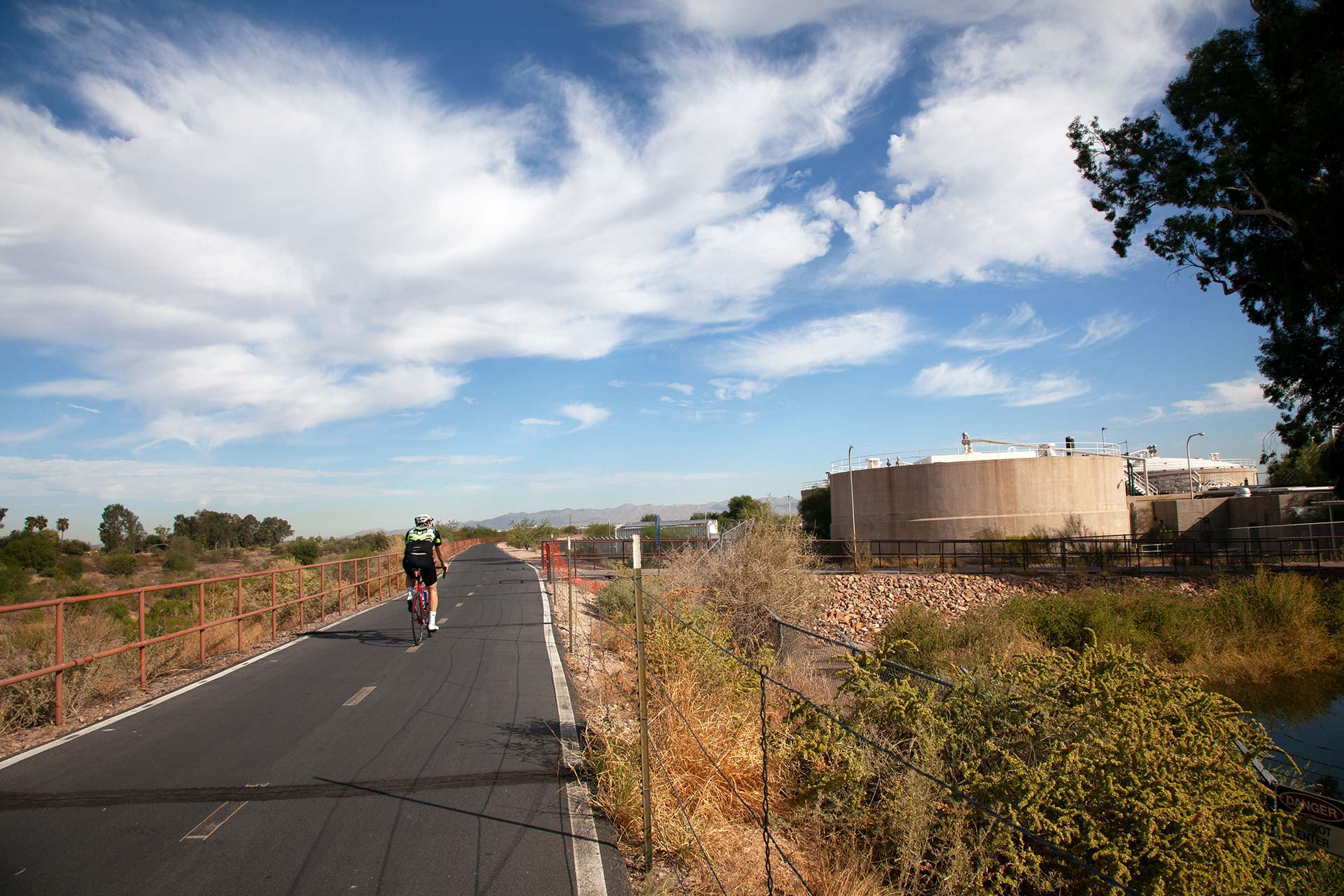 A biker takes a ride down the Chuck Huckleberry Loop on Friday, October 6, past the abandoned Roger Road Wastewater Reclamation Facility. The campus which shut down in 2013, was replaced by the nearby Agua Nueva Water Reclamation Facility that same year.
A biker takes a ride down the Chuck Huckleberry Loop on Friday, October 6, past the abandoned Roger Road Wastewater Reclamation Facility. The campus which shut down in 2013, was replaced by the nearby Agua Nueva Water Reclamation Facility that same year.
The Sonoran Institute and its partners annually monitor the river’s conditions, creating opportunities for the Tucson community to reconnect with the river after decades of neglect.
“We have a lot of repairs to do, we have a lot of reconciliation to do with the Tucson community,” Cole said.
Despite its apparent dryness, the Santa Cruz River’s water is increasingly underground– a key factor in maintaining a flowing river system, according to Cole.
“We have perennially flowing stretches of the Santa Cruz now as a result of good government policy and good technology around wastewater,” Cole said.
Closer to the border, there are about 15 miles of the Santa Cruz River that are flowing, as a result of a federally managed wastewater treatment facility that gets its water from Ambos Nogales, or both Nogaleses.
In Tucson, the Santa Cruz flows through downtown, and from Irvington Road to Congress. The stretch from Starr Pass to Congress is called the Heritage Reach, which began flowing in 2019. This water comes from the city and county’s reclaimed water lines, the distinctive purple pipes seen around town.
Over 20 miles of flowing water give life to the once-dry riverbed, fostering lush vegetation such as cottonwood, willow, and mulberry trees.
However, not all vegetation is desirable; invasive plant species such as tamarisk and stinknet pose challenges. Partners actively map their locations and implement firebreaks to control them.
“Stinknet should have people’s ear because it will aggravate your skin, it could aggravate your lungs if you have too much exposure to it,” Cole said.
The Santa Cruz also now harbors the Gila Topminnow, an endangered species that hasn’t been seen for over a century.
“They’re the canary in the coal mine,” Cole said.
Every year, the Sonoran Institute conducts a fish survey and in this year’s, “Living River” magazine, they were able to identify more numbers and distribution of the endangered species throughout the river. The positive trend aligns with the enhanced conditions for aquatic wildlife thanks to the improved water treatment technologies. The magazine reports slightly elevated levels of dissolved oxygen, up to 7mg/L from 6 mg/L in 2021.
Vibrant neon green and blue stencils of the fish decorate parts of the Loop’s asphalt, guiding visitors to their habitat.
“They’re inviting people recreating along the loop to walk down this yellow staircase, to go to the outfall of where the water coming out of the Agua Nueva wastewater treatment facility enters into the Santa Cruz River,” Cole said.
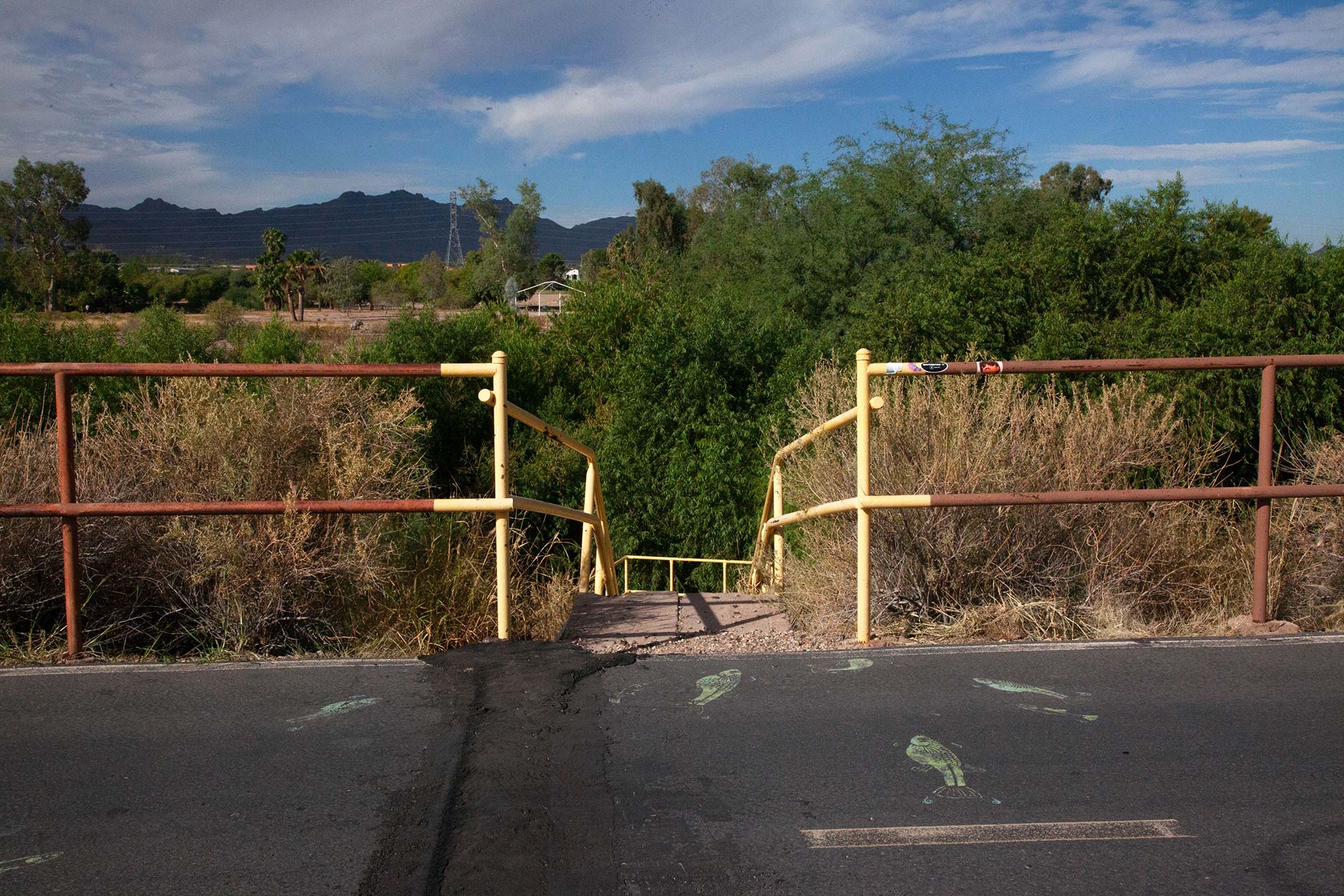 Off of the Loop, are steps that overlook the outfall, or area where effluent is released from the Agua Nueva treatment center. The water is known to have a healthy population of the endangered Gila Topminnow, the fish species that is stenciled around the steps.
Off of the Loop, are steps that overlook the outfall, or area where effluent is released from the Agua Nueva treatment center. The water is known to have a healthy population of the endangered Gila Topminnow, the fish species that is stenciled around the steps.
The outfall of water is constantly flowing, but there is a diurnal fluctuation as humans are cyclical in their water use. Storms from the south that head up north can connect with the outfall.
The source of this water is everything that Tucsonans and Pima County residents flush down the toilet, or send down the drain and gets captured by the city’s wastewater infrastructure. It gets treated at two wastewater treatment plants and gets released into the Santa Cruz River.
The water that gets used by bugs, fish, birds, and wildlife is the same quality as if it were driven by rainfall or an abundance of groundwater.
“It’s clean, it’s clear, it’s odorless and it’s providing habitat while recharging the groundwater beneath us,” Cole said.
While people can walk and splash in the river, they should still exercise caution. It isn’t recommended to completely submerge or scoop water from hand to mouth due to occasional spikes of E. coli, especially after storm events.
To the east, the Agua Nueva campus managed by the Pima County Regional Wastewater Reclamation Department, plays a pivotal role. Jackson Jenkins, the head of the county’s wastewater reclamation department oversees a vast infrastructure that’s valued at around $1.3 billion and includes seven treatment facilities, 3,500 miles of conveyance pipelines, about 25 pump stations, and odor control sites.
The two big treatment facilities, Tres Rios and Agua Nueva have been strategically located along the Santa Cruz River to minimize the need for energy-intensive pumping.
“When you build a treatment facility, you’d like it to be at the lowest point in the system as possible,” Jenkins said.
The sewage flows by way of gravity, making it efficient and reducing the carbon footprint.
These wastewater treatment facilities receive sewage before treating it and discharging it into the Santa Cruz River at some times, and reusing it in recharge basins or riparian habitats at others.
A significant partner in this effort is Tucson Water, the custodian of the purple reclaimed water system. This effluent is distributed to various locations including golf courses, ballparks, and other places.
The symbiotic relationship between the Sweetwater Wetlands Park showcases the efficiency of the system. According to Jenkins, the park receives approximately 15 to 20 million gallons of effluent from the Agua Nueva facility. The reclamation facility takes in about 25 million gallons of sewage a day.
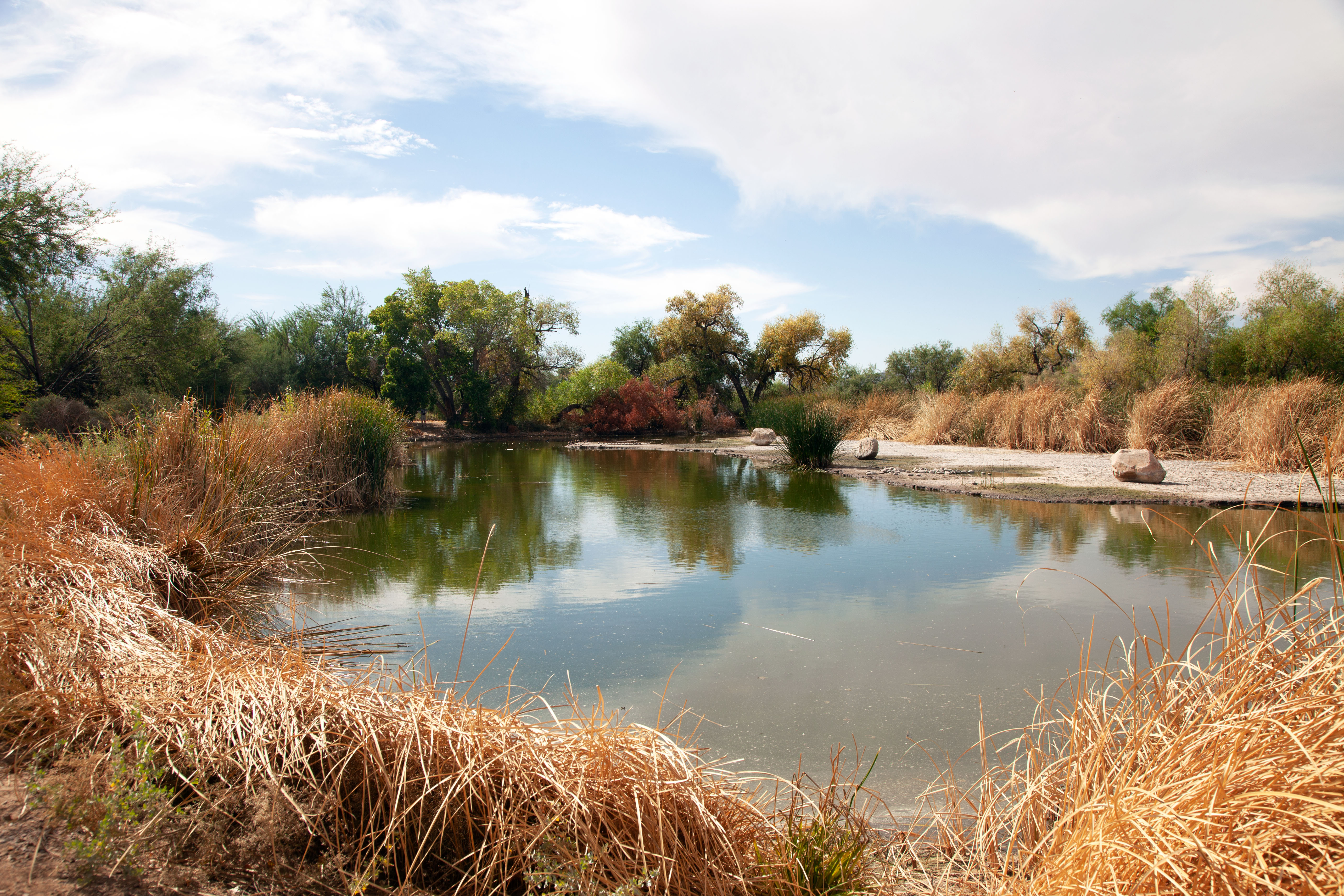 Sweetwater Wetlands Park on Friday, October 6. The pond is home to ducks, Sonoran mud turtles, American bullfrogs and other species.
Sweetwater Wetlands Park on Friday, October 6. The pond is home to ducks, Sonoran mud turtles, American bullfrogs and other species.
John Kmiec, director of Tucson Water said that the park has 11 recharge basins on both sides of the Santa Cruz for aquifer recharge, storing the water for future use in the Tucson reclaimed water system.
Notably, four of the 11 basins were constructed around 1996 and functioned as a treatment plant.
“It used to take backwash water from Tucson Water’s reclaimed water treatment plants that filtered water that used to come from the Agua Nueva, which was also known as the old Roger Road plant,” Kmiec said.
With the replacement of the Roger Road plant by the Agua Nueva facility in 2013, the quality of treated wastewater improved.
Today, the Sweetwater Wetlands are more of a public amenity rather than a treatment facility, thanks to the cleaner treated wastewater from the Agua Nueva facility.
Where water flows, there is life.
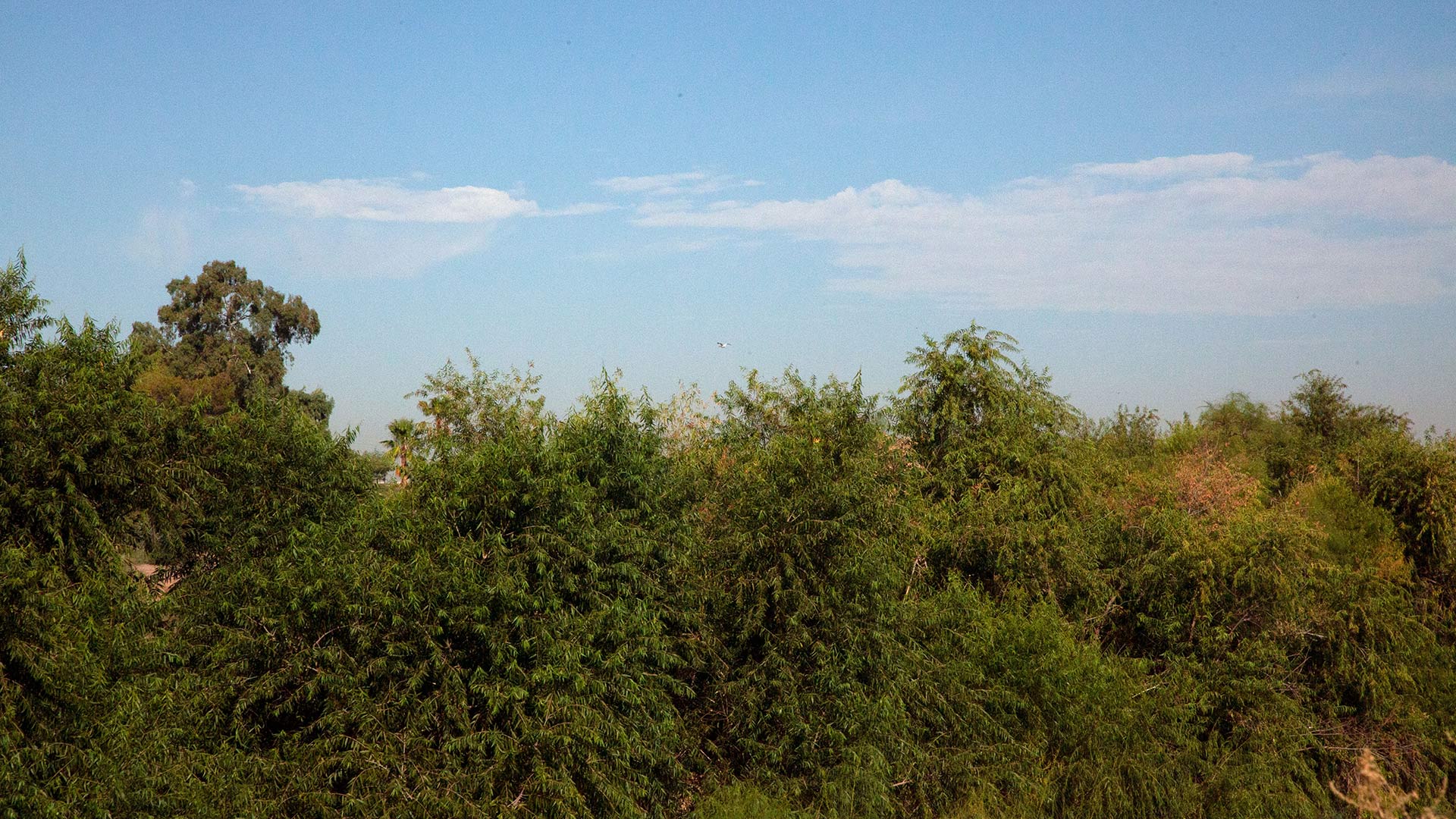 A water bird hovers around the Santa Cruz River. The area is an avid bird-watching spot, where many rare bird species can be spotted from the Loop and nearby Sweetwater Wetlands Park.
A water bird hovers around the Santa Cruz River. The area is an avid bird-watching spot, where many rare bird species can be spotted from the Loop and nearby Sweetwater Wetlands Park.
Adjacent to the nature preserve is the abandoned Roger Road facility, a site awaiting its future purpose. Its potential has been suggested as a mural site or park, considering the promising transformation from the wetlands to the water outfall– a welcoming space for visitors.
This year’s “Living River” issue underscores the co-benefits of groundwater replenishment through reclamation. The area is becoming an eco-tourism hub, breathing life and recovery into the arid Southwest’s water portfolio.
Cole has credited the renewal to the responsible allocation of taxpayer money and successful environmental stewardship.
Jenkins has emphasized the importance of water reuse, giving the dwindling supplies of Central Arizona Project water and Colorado River water.
“One way or the other, the effluent that comes out of all of our treatment facilities, we’re going to have to take a real hard look about potentially turning it into drinking water quality, ultimately,” Jenkins said.
A future of water innovation is on the horizon.
Determining the most suitable use for this reclaimed resource is an ever-evolving process.
“Direct potable reuse and indirect potable reuse are both going to be much more common topics that people will be discussing,” Jenkins said.
Stewardship initiatives spearheaded by organizations such as the Sonoran Institute play a crucial role in preserving and enhancing waterways like the historic Santa Cruz River.
“This is an ancient, important, beautiful, tribally, culturally important river. It deserves our respect,” Cole said. “We are on native land or on sacred ground and anything you can do to appreciate, beautify this river is showing respect to the system and the people who came here before us.”

By submitting your comments, you hereby give AZPM the right to post your comments and potentially use them in any other form of media operated by this institution.